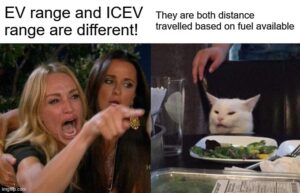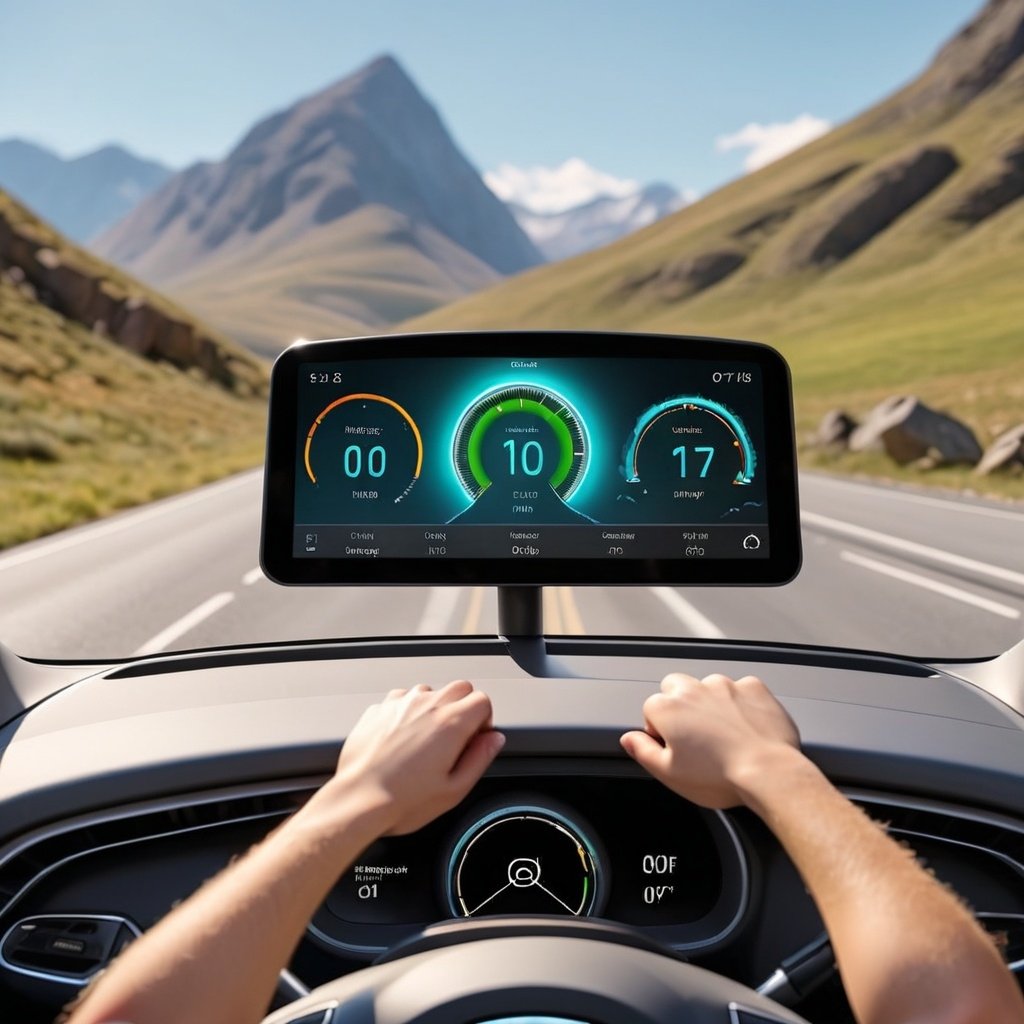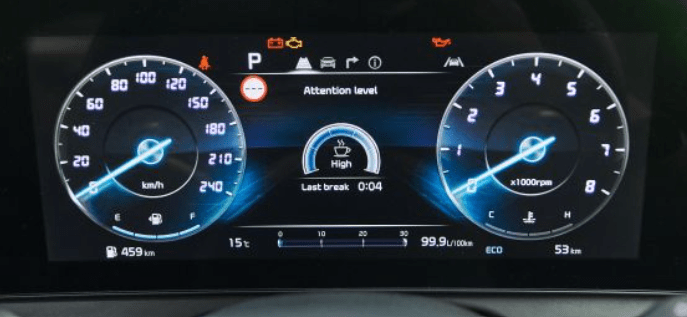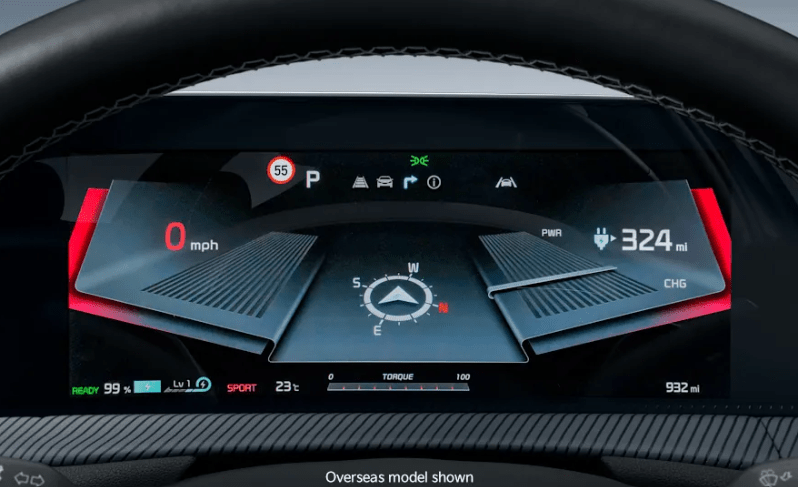Let’s look at EV Range Anxiety and the Guess-o-meter
Until quite recently I drove a 2019 Kia Sportage turbo diesel. It had a little number on the dash saying Range: 600km , or whatever the range was based on my previous driving habits, how much was in the tank, and my consumption in litres per hundred kilometers.
Guess-o-meter is simply another name for this range meter. The name has really taken off with the advent of electric cars.
My new EV6 has pretty much the same interface, it just uses kWh per hundred kilometers and State of Charge (SoC) to determine the range. Driving habits play a very similar role.
Other than it’s greatly increased prominence on the dashboard, there’s really very llittle difference between the ICEV and range meter in electric cars.
Yet people seem to think the this range indicator, or guess-o-meter, is some form of magical thing that tells them exactly how much range they have. They drive fast and furious, then complain that they didn’t get the range the computer promised on the dashboard. It’s no different to petrol… drive it like you stole it, and the range is going to drop! Dramatically! Petrol or electricity, it doesn’t really matter.
So why is there so much EV range anxiety and confusion over the guess-o-meter?
I put it down to a few things:
- People’s expectations. People assume the EV meter is perfect, when we all knew the petrol or diesel version was a guess at best… or we totally ignored it.
- The EV meter is dependent on a couple more variables and therefore slightly less accurate.
- The EV range meter is much more prominent on the dashboard.
- and finally, We’ve all been conditioned to treat range as something new and special in EVs. Fossil fuel cars had a range, we all knew it, but it wasn’t part of our daily conversation because fuel was plentiful and easy to get. If you go up hill in a petrol car, you use more fuel. If you drive fast you use more fuel. We all know it, but in petrol cars we ignored it. Suddenly range became a big thing when we moved to electricity… probably because the earliest EVs had a small battery and everyone focused on this.
Misunderstandings about the guess-o-meter?
So why is the guess-o-meter so misunderstood? Here’s a quick breakdown of what it does. I’m going to continue to compare electric cars with the fossil fuel equivalent. Range anxiety, or more accurately range, was rarely talked about in a petrol car. People just got in a drive. Sure some people mentioned they could get a certain distance without refuelling, but refuelling and petrol stations were so common that it really didn’t matter. Range only became a big thing with the advent of electric vehicles and the misconception that electricity was somehow scarce. Electricity is more common than petrol, we just need the right infrastructure to get it into our cars. EV charging infrastructure needs to be come common, the electricity already exists.
The guess-o-meter simply takes the State of Charge (SoC) of the battery and divides it by your consumption to determine how many miles or kilometers you can go with the current SoC.
The fossil fuel equivalent did the same thing. It measured how much fuel was in the tank and divided in by consumption rate to tell you how far you could go.
There’s really very little difference at this point. It’s simply: How far can you go with X amount of fuel or energy?

What the guess-o-meter isn’t
It isn’t some magical number that tells you exactly how far you can drive before you need to charge or refuel. It will depend on how you drive and accelerate, the weather, if you’re going uphill or downhill and whether you’re on the highway or in the backstreets of town.
It’s not a crystal ball. It does depend on the future, i.e. what you do from now on, but it can’t predict the future. Because it can’t predict the future, it’s calculated on the past behaviour. It’s a bit like the stockmarket analysts trying to predict a stock price based on past performance.
Electric vehicle range isn’t some new concept, invented with electric vehicles. EV range isn’t any different fundamentally to petrol or diesel car range.

Consumption is King!
In both electric cars and ICEVs the consumption is calculated based on recent driving. Your range will appear to be much longer after a stint on the highway in your ICEV. As soon as you turn into the side streets though, that range meter becomes a lie! Your range will drop dramatically, and eventually this will start to reflect on the dashboard display.
This of course is the other way around in an electric vehicle. Your range will increase when you get off the highway, but again the dashboard display will be wrong for a while until the car starts to understand you’ve changed your driving style.
Driving style will also have an effect on the guess-o-meter’s accuracy. Fast acceleration will reduce your range, slow and steady will also change things.
There’s two more complications with electric cars though. Battery temperature will dramatically alter your range. The guess-o-meter will eventually catch on, but a sudden change in temperature can throw it right out for a while.
The other one is regenerative braking. Changing your braking settings will alter your range. The guess-o-meter will try to compensate, but it’s thrown out by any changes you make.

What can I do to make the EV guess-o-meter more accurate and reduce range anxiety?
Well, you could travel the exact same route, at the exact same speed, without chaging your driving style, ever!
If you can also control the weather to keep the temperature constant and make sure you don’t have variable headwinds or tailwinds, then that will help.
This could theoretically make the guess-o-meter almost perfect.
But in reality, we can’t control those things to any great extent. We will want to drive to different places. Sometimes that will be on highways and sometimes backstreets. We’ll go up and down hills and the weather will do whatever the hell it wants to do.
Knowing these factors will help us make sense of the guess-o-meter. If we’ve done a lot of city driving and you want to go on a road trip, expect the range meter to be reading high. Our range will be lower. If it’s coming in to winter, then range will drop, but the guess-o-meter might not have worked that out yet. There’s no need for EV range anxiety though. Once we understand how to manage the guess-o-meter, we can make allowances and get where we need to go without any hassles.
Future software updates will probably make the guess-o-meter more accurate, as the algorithms mature. As EV charging becomes mainstream, we’ll forget range anxiety altogether.
For now, we just need to recognise it for what it is… a bit of a guess, based on some fairly recent information.




